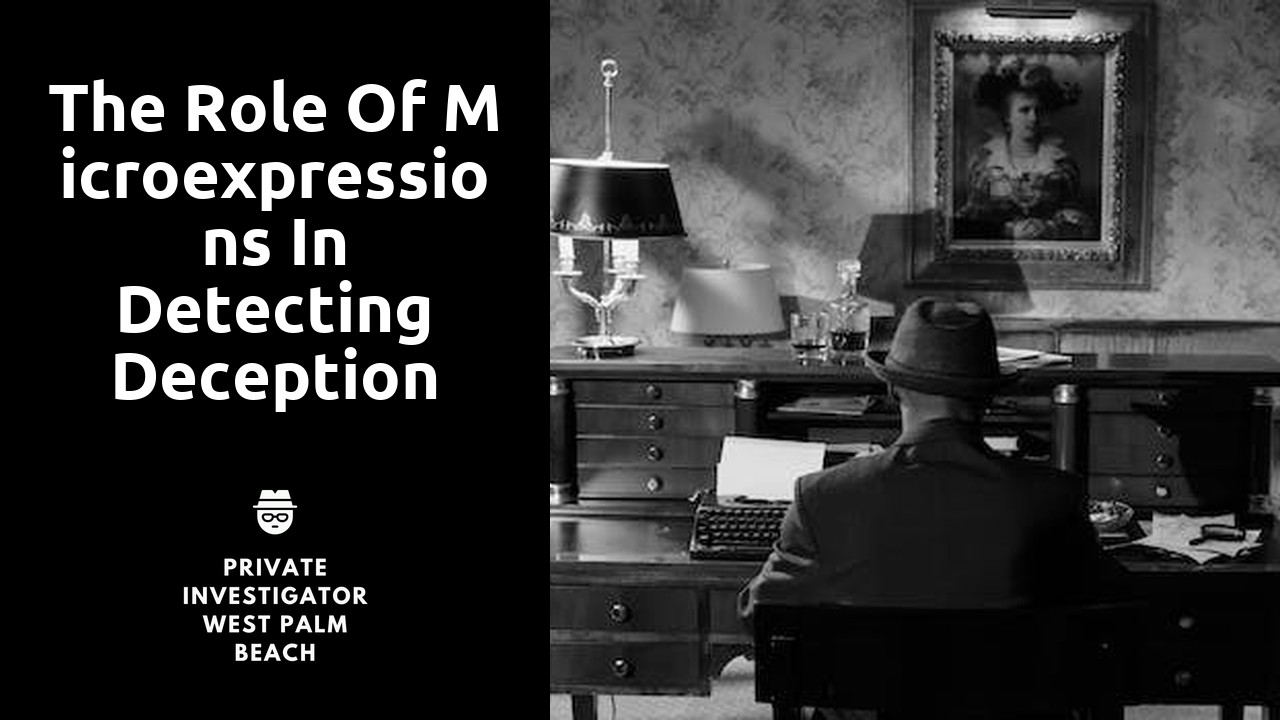
The Role of Microexpressions in Detecting Deception
Unmasking Deception: Decoding Microexpressions
Microexpressions can be powerful indicators of deception, serving as a window into the hidden truths behind carefully constructed facades. These fleeting expressions often occur within a fraction of a second, revealing true emotions that the individual may be trying to conceal. By decoding microexpressions, we can gain invaluable insight into whether someone is being truthful or deceptive.
One key aspect of decoding microexpressions lies in understanding the subtle cues that different facial muscles produce. The eyebrows, for example, play a significant role in conveying emotions. A slight raise of the eyebrows could indicate surprise or disbelief, while a furrowed brow may suggest anger or intense concentration. Similarly, the corners of the mouth can provide vital clues, with a slight upturn indicating genuine happiness, and a subtle downturn revealing sadness or frustration. By analyzing and interpreting these microexpressions, we can navigate through the labyrinth of deception and unravel the truth that lies beneath the surface.
The Hidden Language of Facial Expressions in Detecting Lies
Facial expressions have long been regarded as a window into our emotions. They can convey a range of feelings - from joy and surprise to anger and sadness. However, what if I told you that these facial expressions can also reveal when someone is lying? Yes, there is a hidden language in our expressions that can be deciphered to detect deception.
Microexpressions, those fleeting and involuntary facial movements that last only a fraction of a second, hold the key to unmasking deceit. These microexpressions are often so subtle that they go unnoticed by the untrained eye. However, with careful observation and analysis, they can provide vital clues about a person's true intentions and emotions. By learning to decode these microexpressions, individuals can become adept at reading between the lines and uncovering the truth behind the façade of deception. The hidden language of facial expressions truly holds the power to expose lies and reveal the unspoken truth.
Cracking the Code: How Microexpressions Reveal Deception
Microexpressions are fleeting facial expressions that last only for a fraction of a second. They are often unconscious and involuntary, making them a valuable tool in revealing deception. By decoding these microexpressions, experts can uncover the true emotions and intentions hidden beneath a person's deceptive words or actions.
Cracking the code of microexpressions requires trained observation and a deep understanding of human emotions. These subtle movements in the face can provide critical clues about someone's true feelings, even when they are trying to mask or hide them. By recognizing and analyzing microexpressions, deception can be exposed, providing valuable insights into a person's true intentions and promoting greater trust and transparency in various fields such as law enforcement, psychology, and business.
Mastering the Art of Reading Microexpressions for Truth Detection
Mastering the art of reading microexpressions for truth detection is a skill that takes time and practice. It requires keen observation and a deep understanding of the human face and its intricate communication system. One of the key aspects of this skill is being able to discern the subtle and fleeting microexpressions that often betray hidden emotions or thoughts.
To become proficient in reading microexpressions, it is essential to pay attention to facial movements such as eyebrow raises, lip presses, and eye squints. These can reveal a person's true emotions even when they are trying to conceal them. By carefully studying and analyzing these minute facial cues, one can start to unravel the complex language of microexpressions and begin to identify patterns that indicate deception or the withholding of information. From a slight twitch of the mouth to a subtle movement of the eyebrows, each microexpression is a valuable clue that can lead to the detection of the truth.
Unveiling the Truth: Microexpressions and Deception Detection
Microexpressions are fleeting facial movements that occur involuntarily when a person is experiencing a strong emotion. They provide invaluable insights into the true thoughts and feelings of an individual, even when they are consciously trying to hide or deceive. By carefully dissecting and decoding these microexpressions, experts in deception detection can unravel the truth behind a person's words and actions.
The key to reading microexpressions accurately lies in mastering the art of observation. It requires keen attention to detail and a deep understanding of human emotions. During interpersonal interactions, a fraction of a second can make all the difference in detecting deception. Whether it is a barely noticeable raise of an eyebrow or a fleeting smirk, these subliminal facial cues hold the key to unraveling hidden truths. Through meticulous practice and honing of one's observation skills, microexpressions can be read like a book, successfully exposing lies and revealing the underlying motivations and intentions of individuals.
The Power of Microexpressions in Exposing Lies
Microexpressions are powerful tools in the realm of deception detection. These fleeting facial expressions, lasting only a fraction of a second, can reveal a person's true emotions, even when they are trying to conceal them. The incredible speed at which microexpressions occur makes them difficult to consciously control, allowing trained observers to catch glimpses of concealed emotions and detect possible deception.
Through careful observation and analysis, experts can decipher the hidden language of microexpressions. These subtle facial movements, such as a quick smirk, a subtle raise of an eyebrow, or a fleeting crinkle of the nose, can indicate emotions like fear, disgust, anger, or happiness. By decoding these microexpressions, researchers and practitioners can uncover the truth behind a person's words, exposing lies that might otherwise go undetected. This invaluable skill has applications in various fields, including law enforcement, psychology, and business, where the ability to separate truth from deceit can be a game-changer.
Related Links
Using Nonverbal Communication Analysis to Uncover Hidden MotivesNonverbal Communication Analysis Techniques for Private Investigators
Integrating Psychological Understanding in Investigations
Using Psychological Profiling to Solve Cases
Psychological Tactics in Interrogation
The Importance of Active Listening in Investigations
Identifying Deception Indicators in Interviews